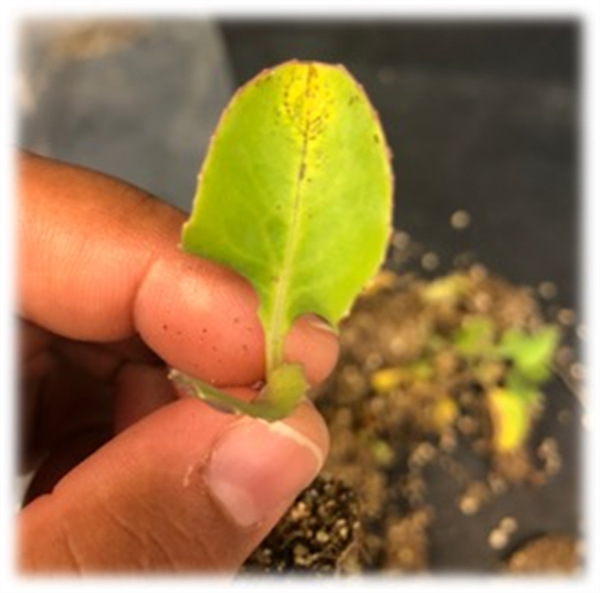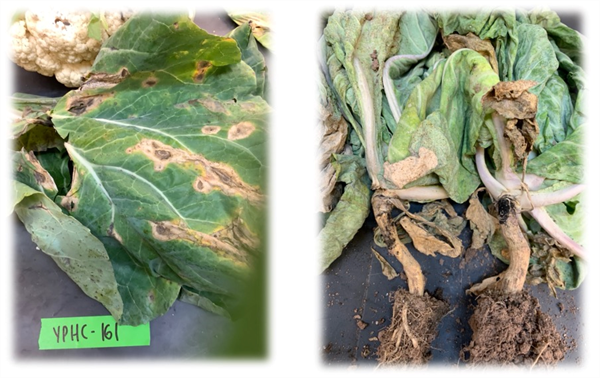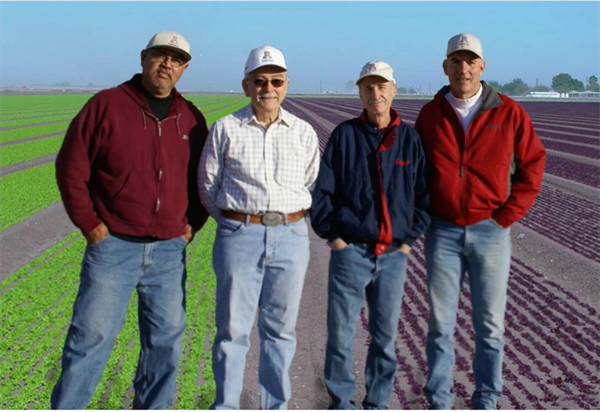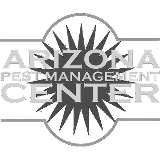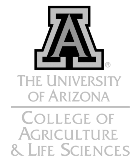Feb 5, 2025
Can Biostimulants Improve Soil Health, Crop Growth, and Yield in Organic Iceberg Lettuce?
Organic lettuce is a high-demand crop for organic nitrogen sources. Lettuce requires a substantial amount of nitrogen to support its growth, particularly during the heading stage when most nitrogen uptake occurs. This demand is driven by its rapid growth rate and the production of large leaf biomass. The organic iceberg lettuce production system is gaining importance both locally and nationally due to the growing demand for healthy, hygienic, and safe food, along with the need for long-term sustainability (McGrady et al, 1991; Koide & Bache, 2021).
In arid regions like Yuma, AZ, where annual precipitation is often less than 3 inches, long periods of drought and frequent heat waves create challenging conditions for soil health. Limited rainfall restricts natural moisture replenishment, leading to soil dehydration and reduced microbial activity. Prolonged drought intensifies soil compaction and salinity buildup, while extreme heat accelerates organic matter decomposition, further depleting essential nutrients. These factors collectively hinder soil fertility, making it more difficult to sustain productive organic lettuce farming without strategic soil health management practices.
Therefore, many questions arise about whether combining fertilizers with biostimulants may improve soil health, particularly soil water retention while also enhancing crop growth, development, and yield. Several studies indicate that the combination of biostimulants with organic fertilizers has a positive effect on soil structure and mitigates stress and crop yield (Rodgers et al., 2020 Li et al., 2021; Zhang et al., 2021). They enhance soil physical properties and boost crop productivity in multiple ways. The potential of biostimulant to align with sustainability policies offers promising prospects for the future of agriculture. Given the environmental challenges associated with current fertilization practices, there is a pressing need to prioritize research that optimizes plant-microbe interactions to establish more sustainable agricultural systems. Biostimulants can positively influence a plant’s response to stress and adverse environmental conditions, promoting growth by enhancing germination, root development, and the plant's ability to access water and minerals.
Thus, investigating the magnitude of the potential impacts of coupled organic fertilizer and biostimulant on soil properties (i.e., soil water retention), lettuce crop growth development and yield for local or regional conditions can result in more effective, relevant, and practical information that can aid users in making management decisions. To address the identified knowledge gaps, preliminary field experiments were conducted during the Fall 2024 growing season at the Valley Research Center, University of Arizona Yuma Agricultural Center. These experiments aimed to establish foundational data to support this proposal.
The field (Figure 1) was planted on October 29th, 2024, and the pre-sprinkler irrigation strategy was utilized to ensure germination which was noticed on November 06, 2024. On December 5, when the lettuce was about 1 inch tall, the first application of 2 quarts/acre biostimulant (FBS Organics® Zicron®) was applied via the subsurface irrigation system. A second application of 1 gallon/acre was applied on January 9, 2025.
To quantify changes in soil water retention, three types of high-tech sensors (Figure 2) were installed after crop emergence to continuously monitor soil moisture levels, along with other key parameters. Additionally, plant height (Figure 3) measurements have been taken to assess the impact of biostimulants combined with organic fertilizers on crop growth and development. Finally, yield differences will be evaluated after harvest to determine the overall effectiveness of these treatments (Figure 4). Stay tuned for the results and conclusions after harvesting.

Figure 1. Satellite image view of the organic research field in the Valley Research
Center at the University of Arizona, Yuma Agricultural Center, Yuma, Arizona.

Figure 2. Nitrate-N sensor and soil moisture sensor from AquaSpy and soil
moisture and salinity sensors from Sentek were installed between two healthy
plants in the organic lettuce production field at the Valley Research Center at the
University of Arizona, Yuma Agricultural Center, Yuma, Arizona.

Figure 3. Plant height measurements in the field at the Valley Research Center at
the University of Arizona, Yuma Agricultural Center, Yuma, Arizona

Figure 4. Lettuce few weeks before harvesting in the field at the Valley Research
Center at the University of Arizona, Yuma Agricultural Center, Yuma, Arizona.






